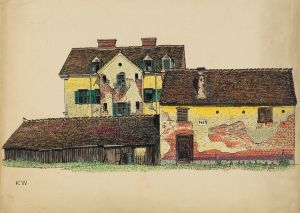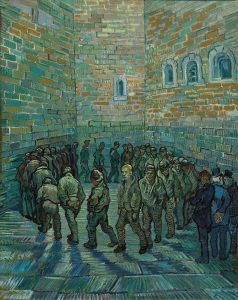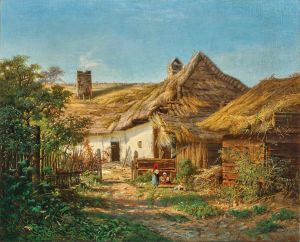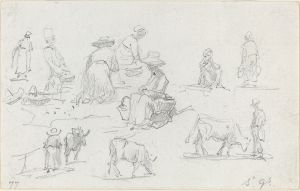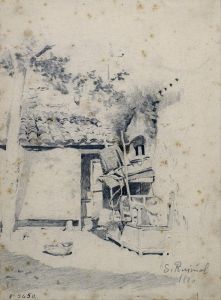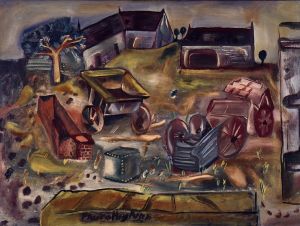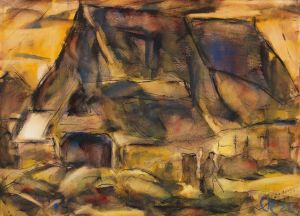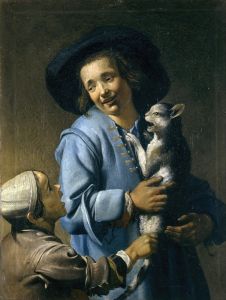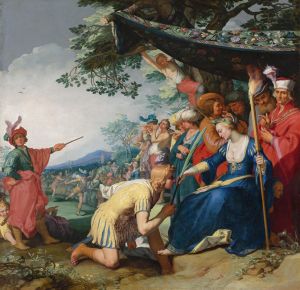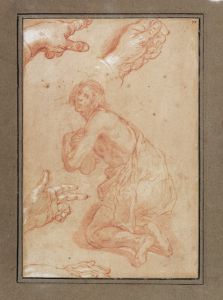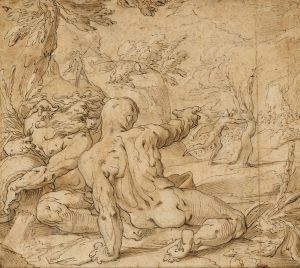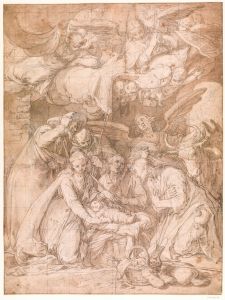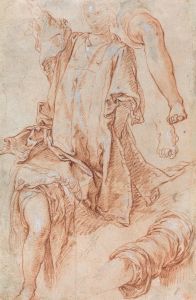
View of a Farm Courtyard
A hand-painted replica of Abraham Bloemaert’s masterpiece View of a Farm Courtyard, meticulously crafted by professional artists to capture the true essence of the original. Each piece is created with museum-quality canvas and rare mineral pigments, carefully painted by experienced artists with delicate brushstrokes and rich, layered colors to perfectly recreate the texture of the original artwork. Unlike machine-printed reproductions, this hand-painted version brings the painting to life, infused with the artist’s emotions and skill in every stroke. Whether for personal collection or home decoration, it instantly elevates the artistic atmosphere of any space.
Abraham Bloemaert's "View of a Farm Courtyard" is a notable work by the Dutch painter, who was a prominent figure in the transition from Mannerism to Baroque in the Netherlands. Bloemaert, born in 1566 in Gorinchem and later active in Utrecht, was a versatile artist known for his landscapes, religious scenes, and genre paintings. His work played a significant role in the development of Dutch art during the late 16th and early 17th centuries.
"View of a Farm Courtyard" exemplifies Bloemaert's skill in capturing rural life and landscapes, a subject that was gaining popularity during the Dutch Golden Age. This period saw a shift in artistic focus towards more secular themes, including everyday life and nature, reflecting the changing tastes of patrons and the growing middle class in the Netherlands.
The painting depicts a typical farm courtyard scene, characterized by its detailed representation of rural architecture and daily activities. Bloemaert's attention to detail is evident in the careful rendering of the buildings, animals, and figures that populate the scene. The composition likely includes elements such as a farmhouse, barns, and various farm animals, which were common features in Dutch rural landscapes of the time.
Bloemaert's use of light and shadow in "View of a Farm Courtyard" demonstrates his mastery of chiaroscuro, a technique that enhances the three-dimensionality of the scene and adds depth to the composition. This technique was widely used by artists of the Baroque period to create dramatic contrasts and to guide the viewer's eye through the painting.
The painting also reflects Bloemaert's ability to convey a sense of atmosphere and mood. The depiction of the farm courtyard may evoke a sense of tranquility and the simplicity of rural life, themes that were appreciated by contemporary audiences. Bloemaert's work often included subtle moral or allegorical messages, though without specific documentation, it is not possible to ascertain if "View of a Farm Courtyard" contains such elements.
As a teacher and influential figure in the Utrecht School, Bloemaert's impact extended beyond his own works. He trained several notable artists, including Gerard van Honthorst and Hendrick ter Brugghen, who carried forward his stylistic innovations and contributed to the flourishing of Dutch art.
While specific details about the provenance and current location of "View of a Farm Courtyard" are not provided here, Bloemaert's works are held in various collections worldwide, including major museums and galleries that focus on Dutch and Baroque art.
In summary, "View of a Farm Courtyard" is a testament to Abraham Bloemaert's artistic versatility and his contribution to the Dutch Golden Age of painting. Through his depiction of rural life, Bloemaert captured the essence of a period marked by a growing appreciation for landscapes and genre scenes, influencing generations of artists who followed.





